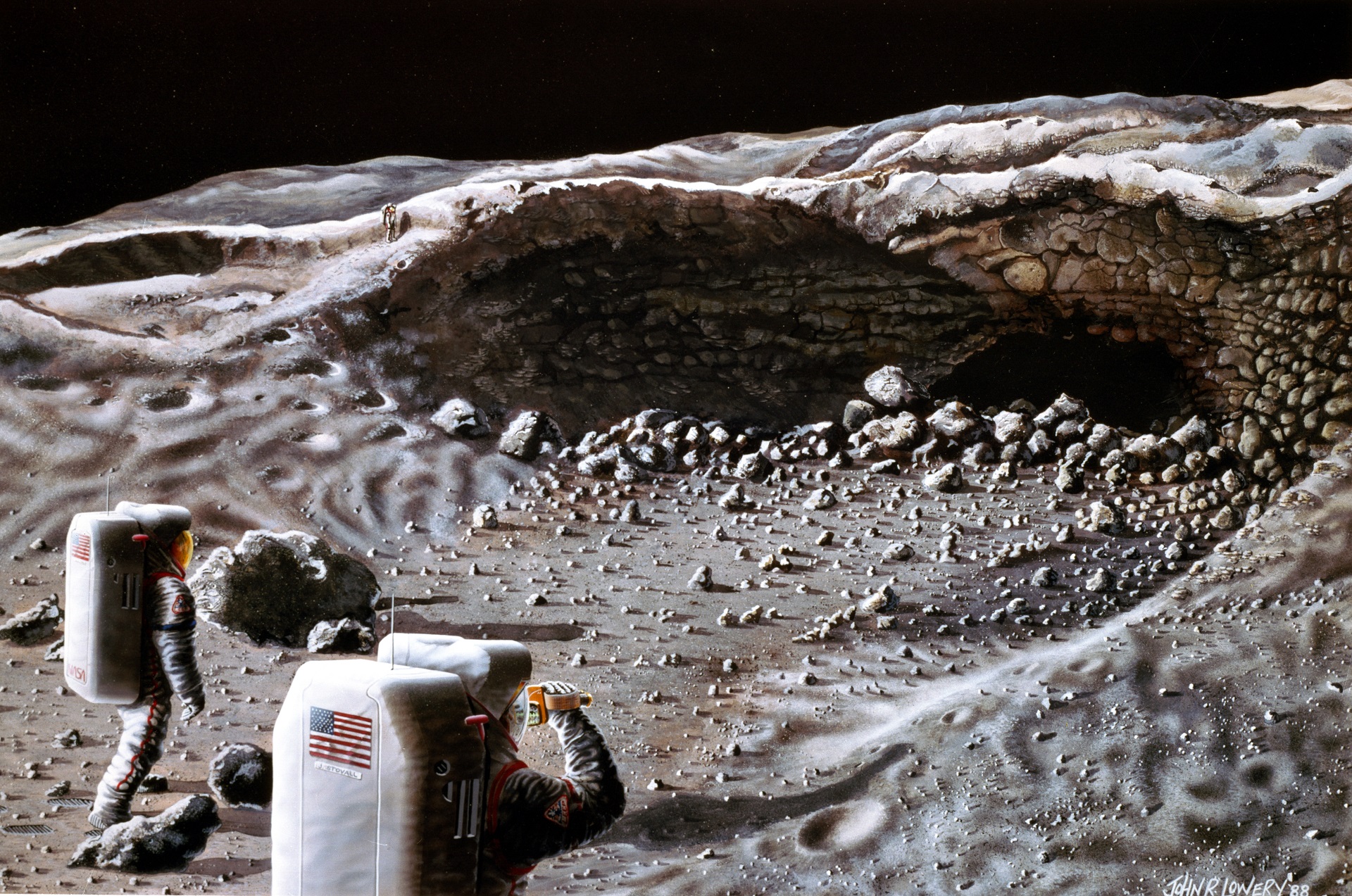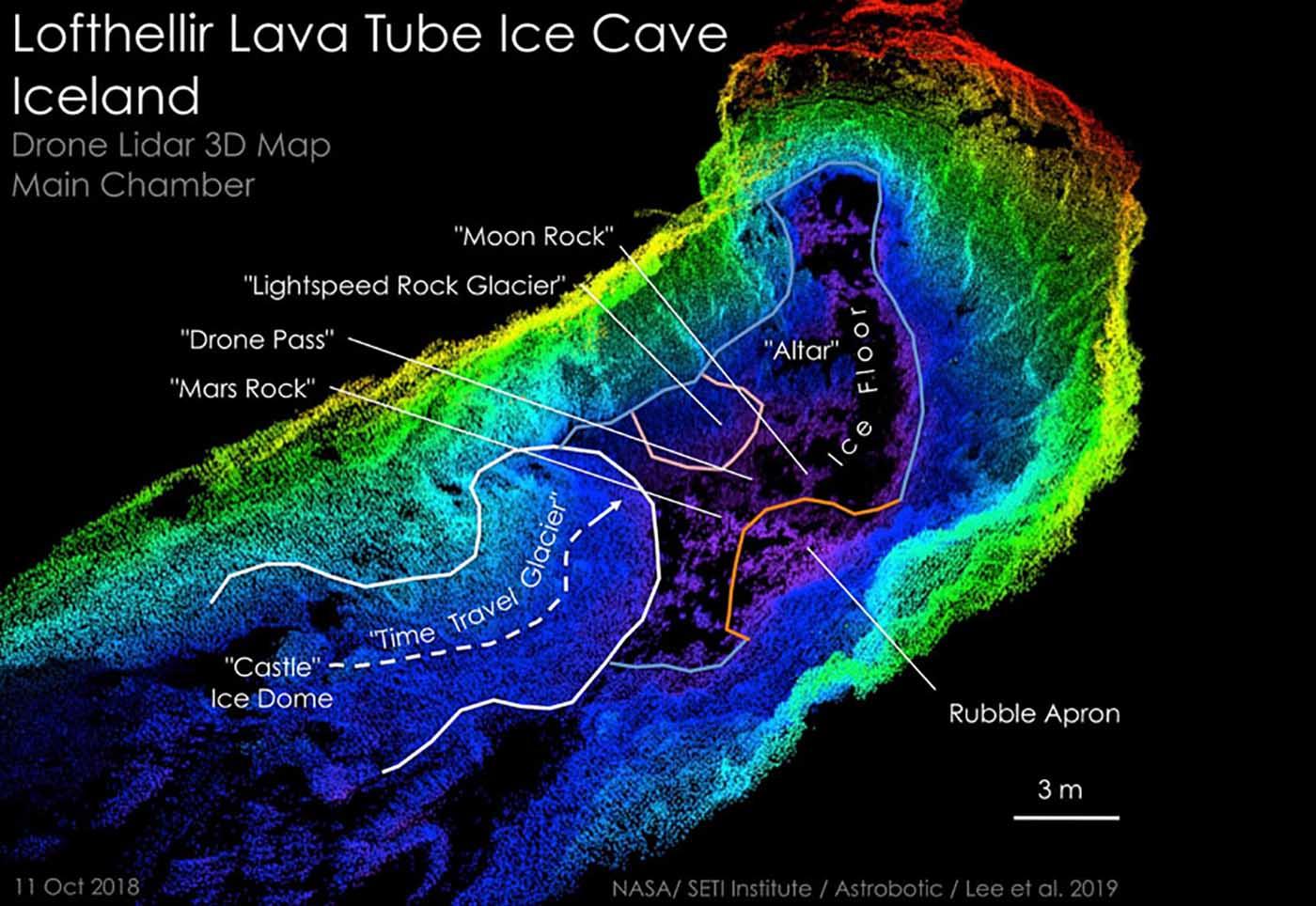Historical Significance of NASA Moon Caves

Nasa moon caves – NASA’s exploration of moon caves holds immense historical significance, as it has provided groundbreaking insights into our solar system’s past and potential for future habitation. The journey to uncover these subterranean wonders began decades ago, shaping our understanding of lunar geology and its implications for space exploration.
In the early 1960s, NASA’s Ranger and Surveyor missions provided the first glimpses of moon caves, revealing dark, cratered surfaces with potential for exploration. However, it was the Apollo program that marked a turning point in lunar cave research.
Apollo Era, Nasa moon caves
- Apollo 15 (1971): Astronauts David Scott and James Irwin became the first humans to explore a moon cave, entering the Hadley Rille region. Their observations and sample collection provided valuable data on cave formation and potential resources.
- Apollo 16 (1972): Charles Duke and John Young explored a larger cave system, discovering a variety of rock formations and minerals. Their findings further solidified the importance of moon caves for scientific study.
Following the Apollo era, NASA’s focus on moon caves waned. However, recent advancements in technology and renewed interest in lunar exploration have reignited the search for these hidden lunar environments.
Contemporary Exploration
- Lunar Reconnaissance Orbiter (LRO): Launched in 2009, LRO has provided high-resolution images of the lunar surface, revealing numerous potential cave entrances. Its data has been instrumental in identifying promising sites for future exploration.
- Artemis Program: NASA’s Artemis program aims to return humans to the Moon by 2024, with a focus on establishing a sustainable lunar presence. Caves are considered potential habitats for future astronauts, offering protection from radiation and extreme temperatures.
The historical significance of NASA’s moon cave exploration lies in its contributions to our understanding of lunar geology, its potential for future human habitation, and its implications for the search for life beyond Earth. As we continue to explore these subterranean environments, we unlock the secrets of our solar system’s past and pave the way for a future where humans may call the Moon their home.
Scientific Implications of Moon Caves

Moon caves, hidden beneath the lunar surface, offer a wealth of geological and scientific insights. These subterranean environments, shielded from the harsh radiation and temperature extremes of the Moon’s surface, provide a unique and protected setting for scientific exploration.
The geological significance of moon caves lies in their ability to preserve ancient geological formations and materials. Lunar rocks and minerals within these caves have remained undisturbed for billions of years, providing a valuable record of the Moon’s geological history. Studying these formations can shed light on the Moon’s origin, composition, and evolution.
The unique environment within moon caves also holds great potential for scientific research. The stable temperature and humidity levels, along with the absence of direct sunlight, create an ideal setting for the preservation of organic molecules and potential biosignatures. Scientists speculate that these caves could harbor remnants of ancient life forms or provide clues about the potential for extraterrestrial life on the Moon.
Astrobiology and the Search for Extraterrestrial Life
The search for extraterrestrial life is a captivating aspect of moon cave exploration. The unique environment within these caves, protected from the harsh conditions on the lunar surface, could potentially support microbial life or preserve evidence of past life.
Studies have shown that moon caves may contain water ice, which is essential for life as we know it. Additionally, the presence of organic molecules and other potential biosignatures within these caves has sparked excitement among astrobiologists. Exploring moon caves could provide valuable insights into the potential for life beyond Earth and the origins of life in our solar system.
NASA’s moon caves, discovered during the Apollo missions, have sparked scientific curiosity. Their existence raises questions about the potential for life beyond Earth. However, recent controversies surrounding the delta airlines palestinian flag incident have overshadowed these discoveries. Nonetheless, the exploration of these lunar caverns remains crucial for understanding the origins of our solar system and the possibility of extraterrestrial life.
NASA’s ongoing efforts to unravel the mysteries of these moon caves continue to inspire and captivate the world.
The mysteries of the cosmos have always fascinated us, and the recent discovery of moon caves by NASA has ignited our imaginations. These subterranean chambers could potentially harbor evidence of life beyond Earth, raising questions about the origins of life itself.
As we delve deeper into the secrets of the moon, we can’t help but draw parallels to the ongoing diplomatic efforts of Governor Glenn Youngkin, who recently visited Israel to strengthen ties between the two nations. His mission, like the exploration of the moon caves, is driven by a desire to uncover new possibilities and foster understanding.
As we continue to push the boundaries of human knowledge and cooperation, the moon caves and the efforts of leaders like Youngkin serve as reminders of our endless capacity for discovery and progress.